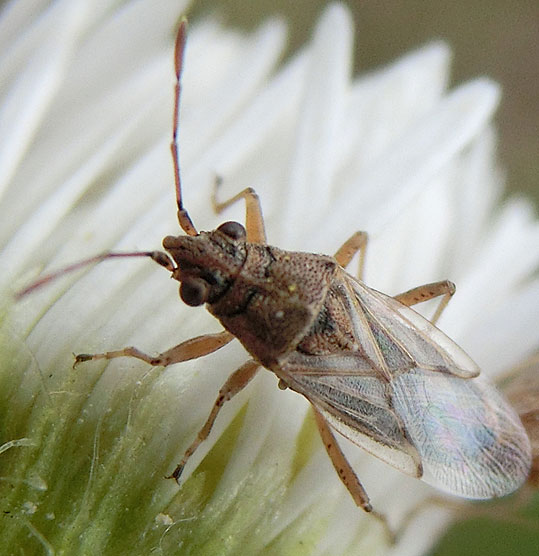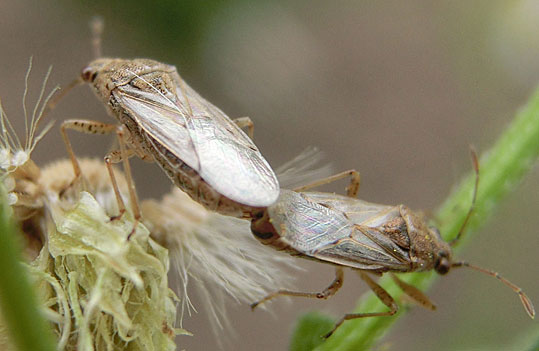Subspecies
|
(1) Nysius senecionis senecionis (Schilling, 1829)
(2) Nysius senecionis binotatus (Germar, 1838)
(3) Nysius senecionis aegyptiacus Priesner et Alfieri, 1953
The status of Nysius senecionis aegyptiacus is unclear. It appears to be
sympatric with the nominate subspecies in Yemen. This has been used as
evidence for the two taxa being identical. Other authors have used this
information as evidence that Nysius senecionis aegyptiacus is a separate
species. I provisionally list Nysius senecionis aegyptiacus here as a
subspecies of Nysius senecionis until more information about its status
becomes available. Only the nominate subspecies occurs in Germany.
|
Synonyms
|
Heterogaster senecionis Schilling, 1829
Nysius senecionis (Schilling, 1829)
Nysius senecionis senecionis (Schilling, 1829)
Nysius gastricus Bergroth, 1920
Nysius graminicola auct. nec Schilling, 1829 (misidentification)
|
Identification
|
It
differs from all other German species of this genus by the length of
the first tarsal segment of the hindleg. In all other species, this
segment is very long, and visibly longer than segment II and III
together. In Nysius senecionis, however, tarsal segment I is as long as
segment II and III together (males; Fig. 1) or only slightly longer than
segment II and III together (females; Fig. 2), because in females
tarsal segment II is especially short.

Fig. 1. Hindleg tarsus of a male comprising three tarsal segments, plus the claws.

Fig. 2. Hindleg tarsus of a female comprising three tarsal segments, plus the claws.
|
Distribution
|
No information has been entered yet.
|
Biology
|
No information has been entered yet.
|
|
|

Male. Specimen photographed in Frankfurt am Main (Hessen) on July 7, 2015.

Female (left) and male in copula. Specimens photographed in Frankfurt am Main (Hessen) on July 7, 2015.
|
|




